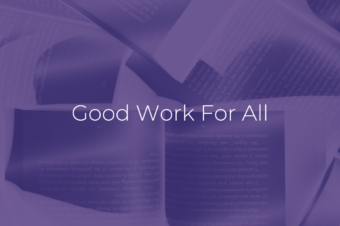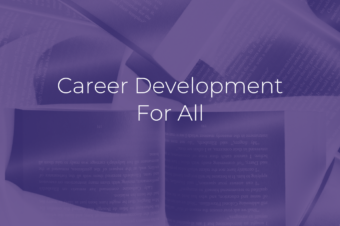
Our partner Fuel50 conducted research on current talent mobility experiences, best-in-class talent mobility, and the imperatives for talent mobility in the future across high-performing organisations around the world.
Why is internal talent mobility high on the agenda for organisations everywhere?
- 55% of employees said they are likely to look for a new job in the next 12 months;
- 60% of respondents said internal talent mobility is extremely important in their organisation, with 43% stating that reskilling is a top strategic priority;
- 58% of respondents said they look internally first when filling open positions.
Talent mobility is a top strategic HR priority for organisations but, there is significant room for improvement to internal recruitment practices and internal talent mobility practices.
Winning the war on talent and improving talent retention statistics requires, organisations to provide their employees with a long-term vision of their career path, of internal opportunities within the organisation, and how those opportunities align with their interests and talents.
Why organisations should encourage talent mobility
The business benefits of internal recruitment and talent mobility are tangible. Internal hires cost half as much, take half the time to onboard, and are, typically, promoted faster. They also have increased engagement and productivity and are far less likely to leave.
That said, the research shows most employers don’t have the numbers to suggest it is happening across the business. Reskilling is a top priority, but HR professionals can’t quantify how many people have made an internal move.
There is significant room for improvement when it comes to internal recruitment and internal talent mobility. A majority of respondents look internally first when filling open positions, and most senior leadership roles are filled internally. However, actual rates of internal movement across all organisations are still surprisingly low.
What prevents talent mobility?
In the face of “The Great Resignation,” internal talent mobility is crucial in supporting talent retention. Employees leave organisations when they do not see a developmental path, as they prefer to go to organisations where they can see a clear future.
There are four top blockers to talent mobility:
- The organisational culture does not support internal mobility
- The organisation lacks processes for managing internal mobility
- A lack of roles for employees to move into
- HR does not have visibility to their talent bench strength across the business.
Robust internal recruitment and talent mobility practices will be essential in the post-pandemic world of work.
Today’s best-in-class talent marketplaces are aiming to connect people to the opportunities within their existing organisations. Talent optimisation and internal mobility are more critical than ever for business agility and even business continuity. Companies that have full visibility to all the different types of talent at their disposal, with a true line of sight to how work is getting done, by whom, with what skills, performed where and at what value, will have an immediate and significant competitive advantage.
Top takeaways:
“Driven employees want transparency into opportunities to learn new skills, take on different assignments, shadow on projects, find mentors and volunteer opportunities, and work with different teams and managers — looking internally for personal growth journeys and new challenges.”
“The more people feel supported in their individual goals, the more they will be engaged and feel the organisation is doing everything possible to offer them growth experiences, help build their career, and, ultimately, keep them on board.”
“Companies that have full visibility to all the different types of talent at their disposal, with a true line of sight to how work is getting done, by whom, with what skills, performed where and at what value, will have an immediate and significant competitive advantage.”
“Talent visibility is a crucial component to talent mobility and the future of work. And there are clear business benefits to having high visibility to talent bench strength.”
.
Download our Purple Paper here.








